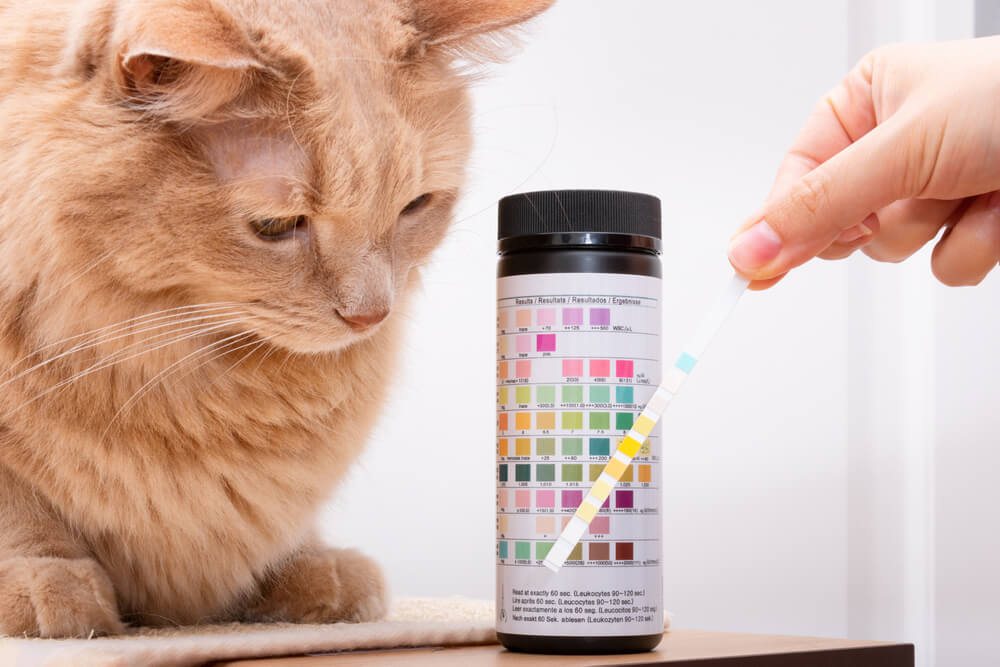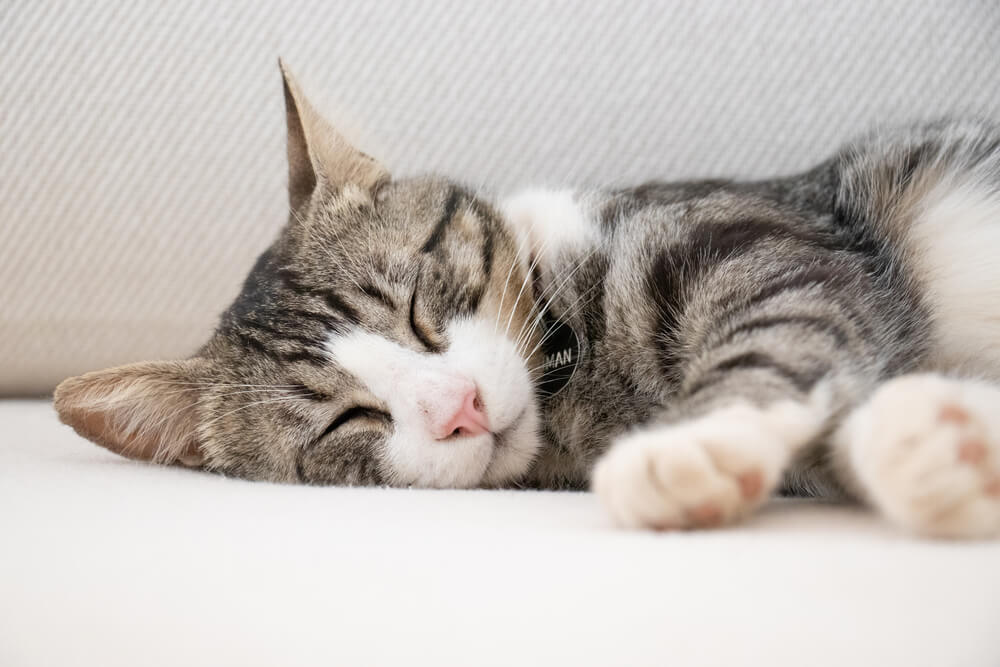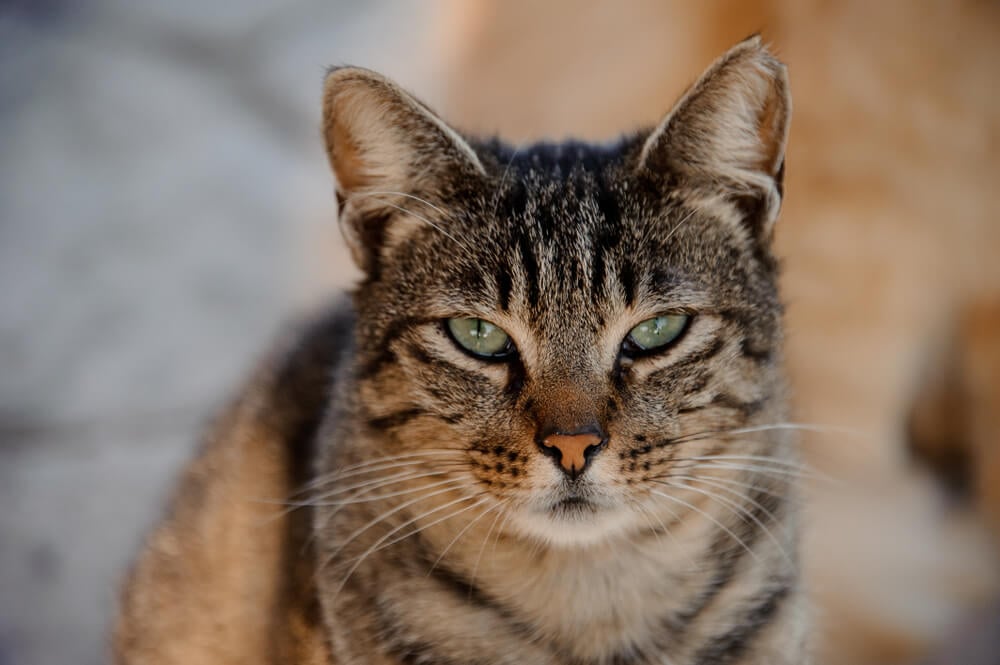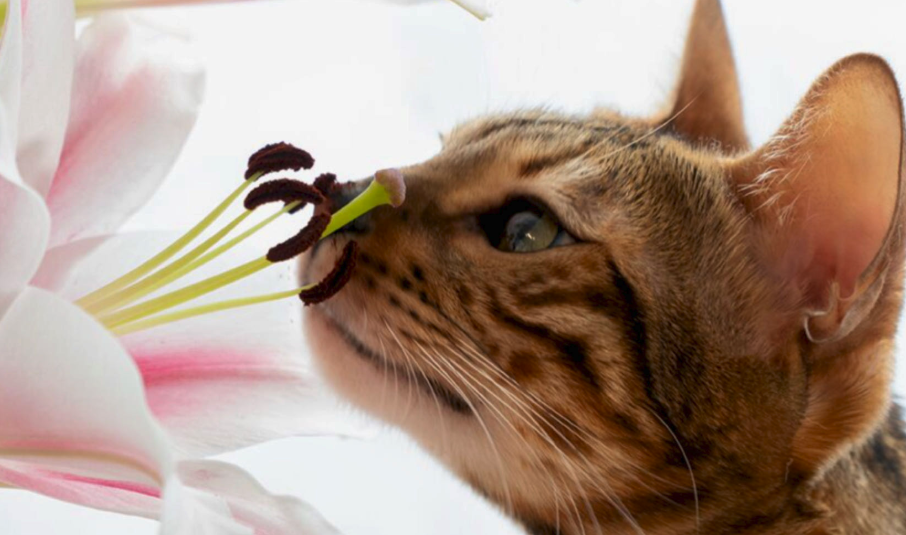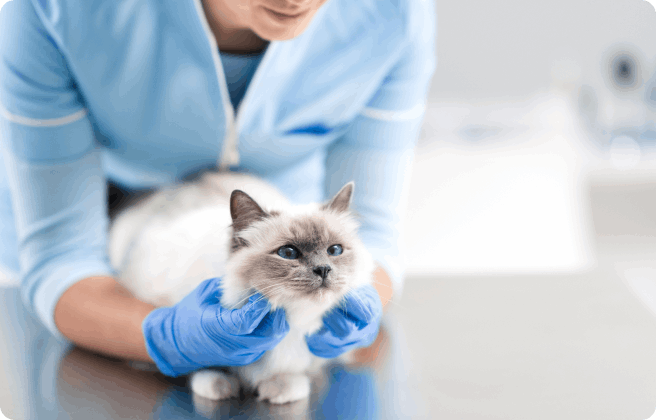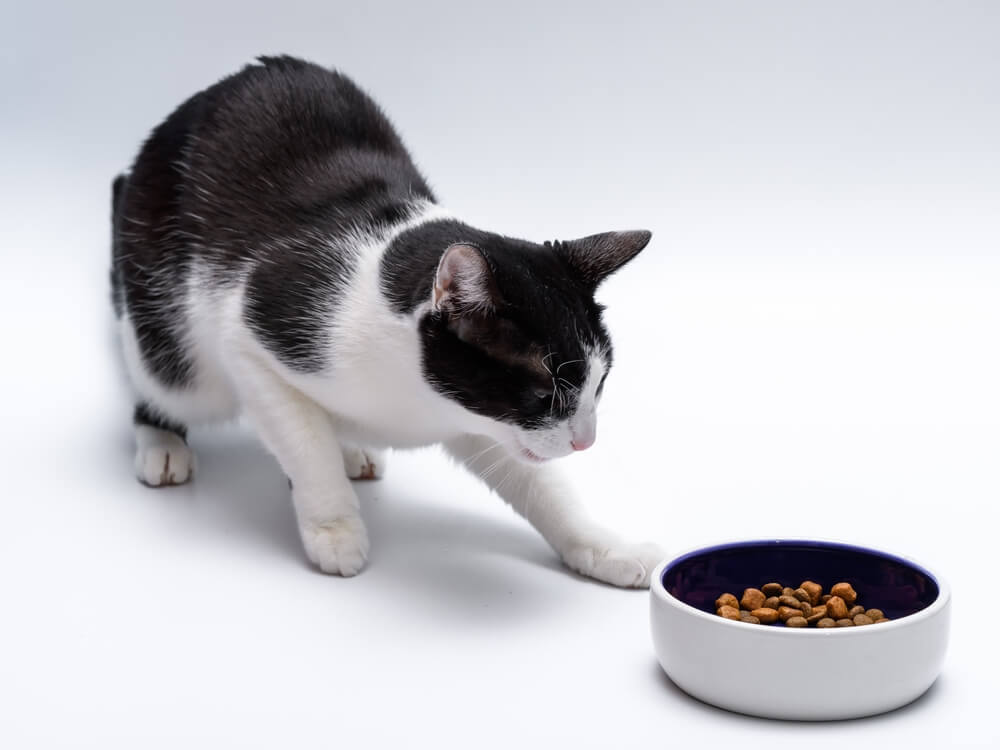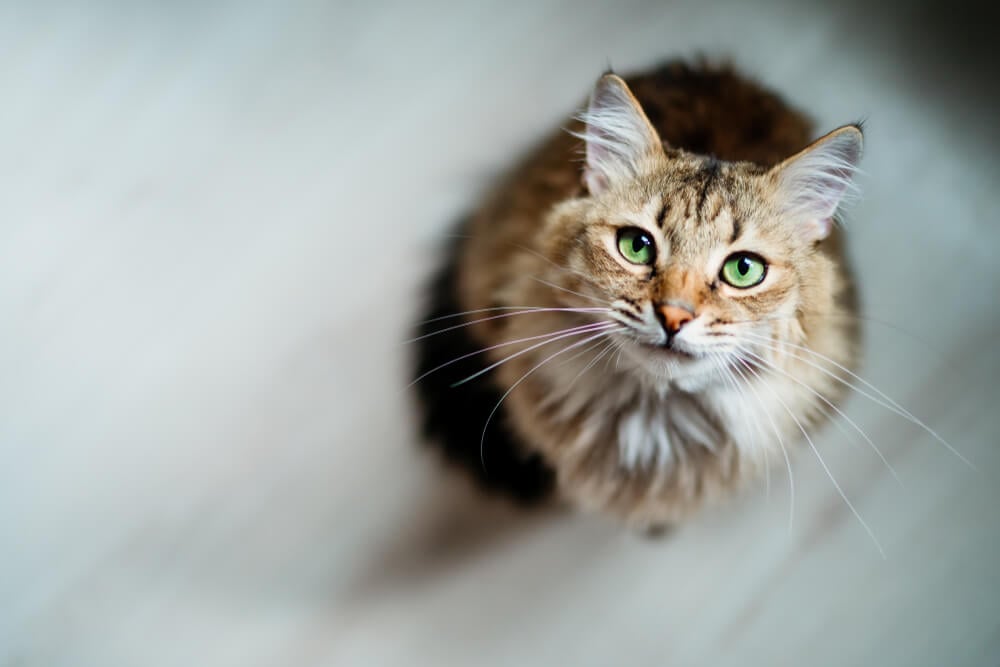
In the world of pet care, few topics elicit as much debate and concern as the ingredients found in commercial cat food. As responsible cat parents, we strive to provide our feline companions with the best nutrition possible, but the landscape of cat food ingredients is riddled with controversy. From mysterious additives to contentious by-products, the choices we make for our pets’ diets can be as complex as they are crucial.
This article embarks on a journey through the labyrinth of ingredients that populate the labels of cat food, shedding light on the controversies that surround them. In an era where pet owners are increasingly conscious of what goes into their pets’ bowls, understanding the debates surrounding certain ingredients becomes paramount. Are these additives truly harmful, or are they unfairly vilified? Are by-products a valuable source of nutrients, or should they be avoided at all costs?
The most common controversial ingredients found in cat food are:
- BHA
- Animal by-products
- Meat by-products
- Poultry by-products
- Brewers rice
- Carrageenan
- Caramel color
- Corn
- Soybean meal
- Whole wheat
- Titanium dioxide (color)
- Artificial colors e.g Red 40, Yellow 5
- Tomato Pomace
- Wheat gluten
- Dried plain beet pulp
- Dried yeast
- Canola oil
- Propylgallate
BHA
What is BHA?
BHA stands for butylated hydroxyanisole, which is a synthetic antioxidant commonly used as a preservative in some food products, including pet foods.
Why is BHA used in cat food?
BHA is often included in pet food to prevent the rancidity of fats and oils, which can occur when these ingredients are exposed to air. Rancidity not only affects the taste and smell of the food but can also result in the degradation of essential fatty acids.
Why is BHA a controversial ingredient?
While BHA has been deemed safe for use in food by regulatory authorities such as the U.S. Food and Drug Administration (FDA), within established limits, there have been some studies suggesting potential health concerns. Some research has linked high doses of BHA to certain health issues in laboratory animals, leading to ongoing discussions about its safety.
Due to these concerns, some pet parents may prefer to choose pet foods that use alternative preservatives. Many pet food manufacturers now offer products with natural antioxidants such as vitamin E (tocopherol) or vitamin C (ascorbic acid) as alternatives to synthetic preservatives like BHA.
Animal, meat, and poultry by-products
What are animal, meat and poultry by-products?
Animal by-products, meat by-products, and poultry by-products are terms used in the pet food industry to describe parts of animals that are not typically consumed by humans but can be used in the production of pet food. These by-products can include a variety of animal tissues and organs.
- Animal By-Products: Animal by-products are derived from the rendering process, which involves processing animal tissues to create fats and proteins. These can include parts such as organs, blood, and bones.
- Meat By-Products: Meat by-products specifically refer to non-rendered, clean parts of slaughtered animals, such as the liver, kidneys, heart, lungs, and other organs. It does not include meat.
- Poultry By-Products: Similarly, poultry by-products include non-rendered parts of slaughtered poultry. This can include organs like the liver, kidneys, and lungs, as well as other tissues.
Why are animal, meat and poultry by-products used in cat food?
Animal by-products are used by some cat food brands as they are an inexpensive source of animal protein. Brands argue that by-products are a valuable source of nutrients for pets, including essential vitamins and minerals found in organ meats.
Why are animal, meat and poultry by-products controversial?
Some consumers perceive animal by-products as low-quality ingredients because they include parts of animals that are not commonly consumed by humans, such as organs, blood, and bones. This perception may lead to concerns about the overall quality and nutritional value of the pet food.
The rendering process used to create by-products involves cooking and processing animal tissues to extract fats and proteins. Critics argue that the rendering process might not completely eliminate contaminants or pathogens, raising concerns about the safety of the final product.
Brewer’s rice
What is brewer’s rice?
Brewer’s rice is a by-product of the rice milling process and is often used in the pet food industry. It consists of small fragments of rice kernels that have been separated from the larger grains of milled rice. These fragments are generally too small or broken to be used in human food products.
Why is brewer’s rice used in cat food?
Brewer’s rice is used in cat food as it is generally easily digestible, making it suitable for cats with sensitive digestive systems.
It is also a source of carbohydrates. Although cats are obligate carnivores, meaning their diet is primarily composed of animal-derived proteins, some carbohydrates can still be included in their diet for energy.
Brewer’s rice may contribute to the texture and palatability of cat food. Cats can be selective eaters, and the inclusion of ingredients such as this may enhance the overall taste and texture of the food, making it more appealing.
Why is brewer’s rice controversial?
Some pet parents may perceive brewer’s rice as a lower-quality ingredient because it consists of broken rice fragments that are not suitable for human consumption. There is a growing trend to choose pet foods with whole and minimally processed ingredients.
Carrageenan
What is Carrageenan?
Carrageenan is a food additive derived from certain types of red seaweed. It is used for its gelling, thickening, and stabilizing properties in a variety of food products, including pet food.
Why is Carrageenan used in cat food?
Carrageenan provides several benefits in the manufacturing and quality of cat food, contributing to the texture, stability, and palatability of the final product.
Why is Carrageenan controversial?
While carrageenan is generally recognized as safe for use in food, including pet food, there have been concerns and debates about its safety in recent years. Some studies have suggested potential gastrointestinal effects in animals and humans, leading to discussions about its use in certain food products.
The FDA reconsidered the evidence and still found carrageenan to be safe.
Caramel color
What is caramel color?
Caramel coloring is a food and beverage additive that is used to impart a brown color to a wide range of products. It is produced by heating sugar, often with acids or alkalis, to create a range of brown hues.
Why is caramel color used in cat food?
Caramel color is approved by AAFCO to be used in pet food, and it makes cat foods and treats a more attractive color. However it provides no nutritional benefit in a cat’s diet.
Why is caramel color controversial?
Caramel color provides a brown hue to cat food, contributing to a more visually appealing appearance. This is important for both wet and dry cat foods, as the color can influence the perceived quality of the product.
The use of caramel color helps maintain a consistent and uniform appearance across batches of cat food. This can be important for brand identity and consumer expectations.
Corn (and any derivatives of corn)
What is corn?
Corn, also known as maize, is a cereal grain that originated in the Americas and is now widely cultivated around the world. It is a member of the grass family (Poaceae) and is one of the most important cereal crops globally. Corn is grown for various purposes, including human consumption, animal feed, industrial uses, and biofuel production.
Why is corn used in cat food?
Corn is a good source of carbohydrates, providing energy for cats.
It is generally digestible, and when processed appropriately, corn can be a well-tolerated source of energy for cats.
Corn contains dietary fiber, which can aid in digestive health and contribute to the formation of well-formed stools.
As a relatively inexpensive ingredient, corn can make cat food more affordable for consumers. This cost-effectiveness allows pet food manufacturers to offer a range of products at different price points.
Why is corn controversial?
Corn and its derivatives are controversial as some believe it to be a low quality or filler ingredient.
Corn is not harmful — it contains proteins, vitamins and minerals, and is a source of energy (carbohydrate), but some people argue that the high carbohydrate content of corn is not well-suited to the natural dietary preferences and metabolic needs of cats.
Cats can also develop allergies or sensitivities to certain ingredients, including grains such as corn.
Soybean meal
What is soybean meal?
Soybean meal is a by-product of the soybean oil extraction process. It is a protein-rich ingredient commonly used in pet foods obtained by grinding and dehulling soybeans and extracting the oil. The remaining defatted soybean material is then processed into a meal.
Why is soybean meal used in cat food?
Soybean meal is valued for its high protein content, making it a valuable source of plant-based protein for animal diets. The protein content can vary depending on the extraction process, but it is generally around 44-48%.
Soybean meal contains a well-balanced amino acid profile, providing essential amino acids that are important for the growth and maintenance of animals.
Why is soybean meal controversial?
Soybean meal is considered controversial as some believe soy to be a low quality or filler ingredient.
Some animals, including cats and dogs, may develop sensitivities or allergies to soy, leading to digestive issues, skin problems, or other allergic reactions.
A significant portion of soybeans used for commercial soybean meal production is genetically modified (GMO). Some consumers express concerns about the environmental and health impacts of GMO crops, leading to preferences for non-GMO or organic alternatives.
There have been discussions about soy’s potential influence on thyroid function, particularly in animals. Some argue that certain compounds in soy, known as goitrogens, may interfere with thyroid function.
Whole wheat
What is whole wheat?
Whole wheat refers to a type of grain, specifically wheat, that contains all three parts of the grain kernel: the bran, germ, and endosperm. This is in contrast to refined wheat, where the bran and germ are removed, leaving only the starchy endosperm.
Whole wheat is considered a healthier option because the bran and germ contain valuable nutrients, such as fiber, vitamins, and minerals. Consuming whole wheat products, like whole wheat bread or whole wheat pasta, can contribute to a more nutritious diet compared to products made with refined flour. The added fiber in whole wheat can also help with digestion and contribute to a feeling of fullness.
Why is whole wheat in cat food?
Wheat is overall safe as an ingredient, and it may be included in cat food products where an inexpensive carbohydrate source is required to provide energy. It also provides some essential nutrients, including B vitamins, minerals like manganese and magnesium, and antioxidants.
Why is whole wheat controversial?
Similar to corn and soybean meal, whole wheat is controversial because it is thought to be a low quality ingredient which offers no nutritional value to cats.
Cats have a shorter digestive tract designed for the efficient processing of animal proteins. Some argue that certain plant-based ingredients, including whole wheat, may not be as easily digestible for cats as animal proteins.
There is ongoing debate about the appropriate level of carbohydrates in cat diets. Excessive carbohydrates may be considered less suitable for obligate carnivores, and some pet parents prefer cat foods with lower carbohydrate content.
Titanium dioxide (color)
What is titanium dioxide?
Titanium dioxide is a naturally occurring mineral that is commonly used as a white pigment in a variety of products, including food, cosmetics, and certain medications. In the context of pet food, titanium dioxide is used as a food coloring agent to provide a white or opaque appearance.
Why is titanium dioxide used in cat food?
Titanium dioxide is used by some cat food manufacturers to make cat food and treats a more attractive color. It is still approved by AAFCO to be used in pet food, and colors are usually included in foods at only tiny quantities.
Why is titanium dioxide controversial?
Titanium dioxide can be manufactured in nanoparticle form, which are particles at the nanoscale. Some studies have raised questions about the safety of nanoparticles, suggesting that they may have different biological effects than larger particles. The potential for nanoparticles to cross biological barriers, including the blood-brain barrier, has been a focus of concern.
There have been concerns about the lack of transparency regarding the use of titanium dioxide in certain food products, including pet foods. Some argue that clearer labeling and communication about the use of food additives, especially those with potential controversial aspects, are necessary for informed consumer choices.
While titanium dioxide is generally recognized as safe by regulatory bodies when used within established limits, there are ongoing discussions about its long-term safety and potential health effects, especially when consumed regularly.
Regulatory bodies, such as the U.S. Food and Drug Administration (FDA), continue to assess the safety of food additives, including titanium dioxide. Changes in regulations or safety assessments may impact the use of this ingredient in the future.
Artificial colors such as Red 40, Yellow 5, Blue 1 etc.
What are artificial colors controversial in cat food?
Artificial colors, also known as synthetic colors or food dyes, are chemical compounds used to add or enhance color in various food and beverage products. These colors are often added to make food visually appealing, increase consumer appeal, or compensate for color loss during processing. In the context of cat food, artificial colors may also be used to create specific visual characteristics.
Why are artificial colors used in cat food?
Artificial colors are primarily used in cat food primarily to enhance the visual appeal of the product. Different colors can be used to distinguish between various flavors or types of cat food within a product line.
Tomato pomace
What is tomato pomace?
Tomato pomace is a by-product of tomato processing that consists of the skin, seeds, and pulp remaining after the extraction of tomato juice and other tomato-based products. It is a fibrous and pulpy material that is often dried and used in various applications, including pet food.
Why is tomato pomace used in cat food?
Tomato pomace is included in cat food, as it is a great source of fiber which is important to maintain gut health in cats. It is also safe.
Why is tomato pomace controversial?
While tomato pomace contains dietary fiber and some residual nutrients from tomatoes, its overall nutrient content may be considered lower compared to other ingredients. Some critics argue that it might not provide significant nutritional value.
Concerns may arise about the processing methods used to produce tomato pomace. Depending on the processing and drying techniques, there could be questions about the preservation of nutritional elements and potential exposure to contaminants.
Tomatoes are a part of the nightshade family, and some pets may have sensitivities or allergies to components found in tomatoes.
Some pet owners associate tomato pomace with the broader issue of fillers in pet food. The term “filler” is often used pejoratively to describe ingredients that may be perceived as less nutritious or added primarily to fill out the volume of the food.
Wheat gluten
What is wheat gluten?
Wheat gluten is a protein found in wheat and other related grains like barley and rye. It is composed of two main proteins: glutenin and gliadin. When wheat flour is mixed with water, gluten forms a sticky and elastic mass. This elasticity is what gives dough its structure and allows it to rise during baking.
Why is wheat gluten used in cat food?
Wheat gluten is included in some cat foods as it is a very concentrated source of protein, which can be beneficial. It is considered safe, and approved for use by AAFCO.
Why is wheat gluten controversial?
Cats are obligate carnivores, meaning they have a biological need for a diet primarily based on animal proteins. While they can tolerate some plant-based ingredients, excessive use of wheat gluten or other plant proteins may not align with their natural dietary preferences.
Some cats, like humans, can develop allergies or sensitivities to certain ingredients, including wheat gluten. In some cases, feeding pets foods containing wheat gluten may contribute to allergic reactions or digestive issues.
There have been instances where pet food recalls were linked to contamination issues, including melamine contamination in wheat gluten. These incidents can contribute to concerns about the safety and quality of ingredients in pet food.
Dried plain beet pulp
What is dried plain beet pulp?
Dried plain beet pulp is a byproduct of sugar beet processing that is often used as an ingredient in pet foods. It is derived from sugar beets after the sugar has been extracted.
Why is dried plain beet pulp used in cat food?
Beet pulp is included in cat food recipes and is a great source of both insoluble and soluble fiber in the diet, which is important to maintain gut health in cats.
Why is dried plain beet pulp controversial?
Dried plain beet pulp is controversial in cat food as some believe it to be a cheap filler.
Dried plain beet pulp contains carbohydrates, and some argue that high carbohydrate levels in cat food may not be optimal for feline health. Cats have a limited ability to metabolize and utilize carbohydrates compared to other animals.
There has been a trend in the pet food industry towards grain-free or limited-ingredient diets. While dried plain beet pulp is not a grain, it is a plant-based ingredient, and some pet parents prefer grain-free options for their cats.
Like any ingredient, some individual cats may have sensitivities or allergies to dried plain beet pulp. If a cat experiences digestive issues or other adverse reactions, it may lead to concerns about the inclusion of this ingredient in their diet.
Dried Yeast
What is dried yeast?
Dried yeast refers to yeast that has been dehydrated to remove its moisture content. Yeast is a type of fungus that plays a crucial role in the process of fermentation, which is commonly used in baking and brewing.
Why is dried yeast used in cat food?
Dried yeast is a good source of protein, B vitamins (such as B12 and niacin), and minerals. These nutrients are essential for a cat’s overall health and well-being. Including dried yeast in cat food helps contribute to the overall nutritional profile of the diet.
Dried yeast has a savory flavor that some cats find palatable. Adding dried yeast to cat food can enhance the taste and appeal of the food, encouraging picky eaters to consume their meals.
It also contains dietary fiber, which can contribute to healthy digestion in cats. Fiber is important for promoting regular bowel movements and supporting gut health.
In some cases, dried yeast may be used as a texturizing agent in cat food. It can contribute to the structure and mouthfeel of certain pet food formulations.
Why is dried yeast controversial?
Some believe that feeding cat’s yeast can be linked to yeast infections, however, unless your cat has a sensitivity to yeast it is a safe ingredient. In many cases, dried yeast is used in moderation as part of a balanced and nutritionally complete cat food formula.
Canola Oil
What is canola oil?
Canola oil is a type of vegetable oil that is derived from the seeds of the canola plant (scientifically known as Brassica napus). Canola oil is one of the most widely used cooking oils in the world and is known for its mild flavor, light texture, and versatility.
Why is canola oil used in cat food?
Canola oil is rich in unsaturated fats, particularly monounsaturated fats and polyunsaturated fats. These fats are essential for a cat’s overall health, contributing to energy, coat health, and various bodily functions.
It also contains alpha-linolenic acid (ALA), which is an omega-3 fatty acid. Omega-3 fatty acids are beneficial for skin and coat health, immune system function, and may have anti-inflammatory properties.
Canola oil can contribute to the texture of pet food, helping to create a desirable consistency. Additionally, it can add moisture to the food, which may be beneficial for cats, especially if they are on a dry kibble diet and need additional hydration.
Why is canola oil controversial in cat food?
Canola oil is seen as controversial because it can be derived from genetically modified (GM) rapeseed. There is currently a debate about whether GM products are unnatural forms of food, and therefore have a negative effect on health if consumed. However, most studies show that GM foods are safe.
Propylgallate
What is propylgallate?
Propylgallate is a synthetic antioxidant commonly used as a food additive to prevent the oxidation of fats and oils, thereby extending the shelf life of various food products. It is a white to nearly white, crystalline powder that is odorless or has a faint characteristic odor.
Why is propylgallate used in cat food?
Cat food often contains fats and oils, which are susceptible to oxidation. Oxidation can result in the breakdown of fats, leading to the development of unpleasant odors and flavors.
In addition propylgallate can help prevent the degradation of certain essential nutrients in cat food, such as fat-soluble vitamins.
Cat food is subject to storage conditions that can affect its quality over time. The inclusion of antioxidants helps maintain the stability and quality of the product throughout its shelf life.
Why is propylgallate controversial in cat food?
The use of propylgallate in cat food has been the subject of some controversy. Some studies have raised questions about potential health effects associated with the consumption of certain antioxidants, including propylgallate. While regulatory agencies such as the U.S. Food and Drug Administration (FDA) have deemed it safe within prescribed limits, concerns may persist in some quarters.
There may be a lack of extensive long-term studies on the safety of propylgallate, especially in the context of pet food. Some individuals express concerns about the cumulative effects of long-term exposure to antioxidants.
Some critics argue that there are alternative antioxidants with proven safety records, and they question the necessity of using propylgallate when other options, such as natural antioxidants or vitamin E, may be available.
We uphold the highest editorial standards when creating the authoritative content pet parents rely on and trust.
Every piece of clinical content on the Cat Food Advisor is reviewed by our certified Veterinary Advisory Board, which consists of licensed veterinarians and medically certified specialists.
Our reviews are completely independent; we are not paid by any pet food company to promote their products favorably. We do not accept money, gifts, samples or other incentives in exchange for special consideration. For more information see our Disclaimer & Disclosure page.




